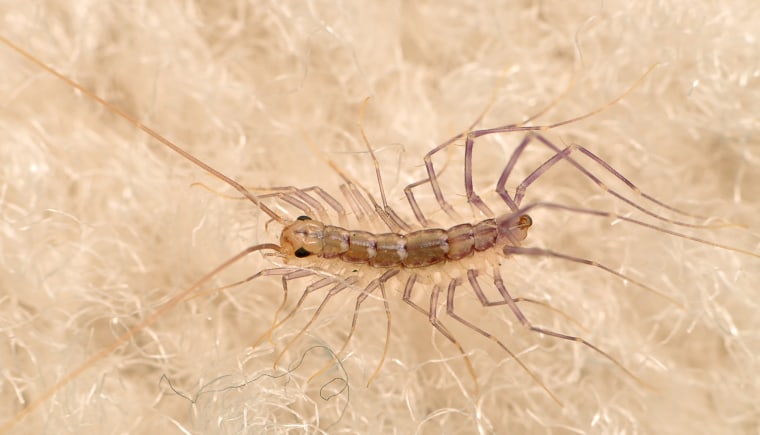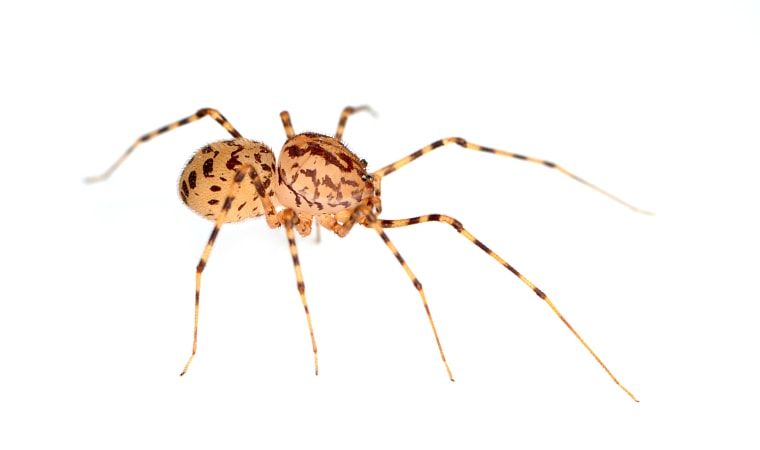You expect to find humans in homes. Pets like cats, dogs, birds, fish, and reptiles also wouldn’t be a surprise.
But did you know you’re also sharing your home with an amazing variety of uninvited guests of the arthropod type? Yep, you're shacking up with spiders, millipedes and many more wee beasties than you ever dreamed possible, according to a new study published in the journal PeerJ.
After surveying 50 houses in the Raleigh, North Carolina area, researchers discovered a mother-lode of creepy crawlies — with no fewer than 570 different arthropod species from 304 different families living with unsuspecting home owners. On average, each residence contained about 100 species, with flies, spiders, beetles, and ants being the most common bugs found.
Keep in mind, many of these arthropods —technically invertebrate animals with external skeletons, segmented bodies and jointed limbs, which can range in size from microscopically small to as big as the 12-foot long Japanese Spider Crab — don't want to be inside your house any more than you want them there.
Some may have wandered in from your yard, been brought in with some cut flowers, hitched a ride on your shoes or just crawled into your house to get out of the cold and then died, explains senior author Matt Bertone, Ph.D., an entomologist with the Plant Disease & Insect Clinic at North Carolina State University.
Don't scream, they're harmless
Although the research team was “somewhat surprised” by the number of specimens they collected, humans shouldn’t panic, says Bertone. “The take home message is that (people) shouldn’t be living their lives any differently,” mostly because you never may see these bugs, and the vast majority that live among us in our homes are harmless, he explains.
Indeed, most of the arthropods found were not even technically considered pests. Rather, they were what the researchers called “peaceful cohabitants.”
Among those peace-lovers were cobweb spiders found in 65 percent of all rooms sampled, as well as “accidental” visitors like midges and leafhoppers, which really do prefer to live outside.
However, if you’re crawling around your house at night on the lookout for your arthropod roomies, you may be lucky (or unlucky) enough to spot some truly strange bedfellows including:
Camel crickets

These little guys look like a mix of a spider and a cricket, leading some people to call them spider crickets or sprickets, says Bertone. While they may be gross to those of us who aren’t bug lovers, camel crickets are considered harmless — although they can jump pretty high and are super quick.
“You have to remember these creatures are more afraid of you than you are of them,” says Bertone.
House centipedes

Why not scream at something that has up to 15 pairs of legs, long antennae and is able to defy gravity by scuttling up walls and ceilings faster than the speed of light? Well, for starters, centipedes are harmless (unless you faint from seeing one and fall on your head) and they also do humans a solid.
“Centipedes get a bad rap and are good arthropods to have in homes since they are generalist predators and like to eat roaches and flies,” says Bertone.
Spitting spiders

Sometimes arthropods take on a curiously cute countenance. “The spitting spider is very cool and looks like a cartoon spider,” says Bertone, who actually had one as a pet for a while. It may look harmless — and it is to humans — but it captures its prey by spitting a venomous silk on it. After its prey is paralyzed, it becomes the spitting spider's supper.
While all of these creatures may make your skin crawl, you should know you've been sharing space with them for a long time.
“We’ve been living alongside these creatures since we lived in caves, and they aren’t going anywhere,” says Bertone.
"You have to appreciate their diversity and adaptability," he says.